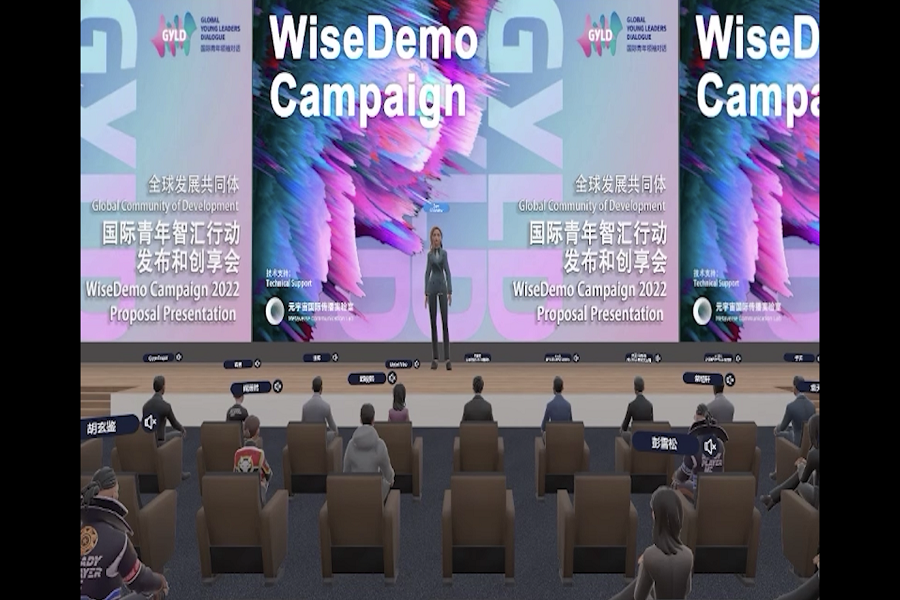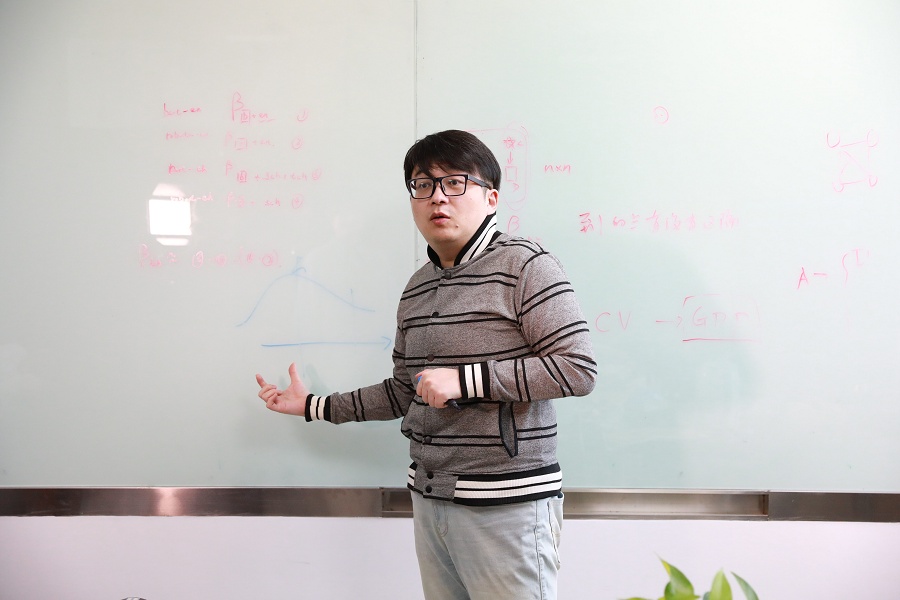A Talk About ChatGPT

Wontons, dumplings, fried rice… Chinese people are always thinking about food, so it should come with no surprise that a poetic ode to Chinese favorites made the rounds online recently. But the speed at which the rhymes were authored was particularly impressive.
“Oh, how I miss my favorite treat/The aroma of Chinese food can’t be beat/Wontons, dumplings, and fried rice/Each bite brings me such delight/Egg rolls with sauce, so crisp and so hot/I long for them, whether in a pot or a knot/And don’t forget the noodles so long…”
The poet was none other than ChatGPT (Generative Pre-trained Transformer), an AI-powered chatbot developed and launched by San Francisco-based startup OpenAI in November 2022. It uses deep learning techniques to generate human-like responses to text inputs in a conversational manner. It can instantly compose poetry in William Shakespeare’s style or offer sound advice on planning a child’s birthday party for example.
“ChatGPT is an application example of the artificial general intelligence (AGI) technology, which enables an AI model to be competent for multiple tasks,” said Yu Yang, assistant professor of the Institute for Interdisciplinary Information Sciences at Tsinghua University. “It demonstrates a new type of AI-based digital infrastructure that contrasts traditional software-like AI models that perform one task only.”

The WiseDemo Campaign 2022 Proposal Presentation, a central piece of the Global Young Leaders Dialogue program, kicks off online via an AI format, July 15, 2022. (Photo courtesy of the Academy of Contemporary China and World Studies)
“Scary Good”
What makes ChatGPT so impressive is its ability to produce human-like responses, thanks in no small part to the large language model (LLM) that powers it by scouring a large corpora of data. Also, ChatGPT can log context from users’ earlier messages in a thread and use it to form responses later in the conversation. The dialogue format empowers ChatGPT to answer follow-up questions, admit its mistakes, challenge incorrect premises, and reject inappropriate requests.
It should be noted that ChatGPT’s LLM also has limitations. It cannot provide explanations or reasoning for responses and may not always generate responses that are completely coherent or make sense in the context of a conversation. It can only provide information that it has been trained on and may not be able to answer questions ranging outside training data. Also, sometimes it can generate responses that contain offensive or inappropriate language. China’s Minister of Science and Technology Wang Zhigang figuratively quipped about ChatGPT on the sidelines of this year’s “two sessions” on March 5: “Just like playing football, it’s just dribbling and shooting, but it isn’t easy to get as good as Lionel Messi.”
According to a CNBC technology commentator, LLM is the underlying technology that powers chatbots. If a chatbot were a car, LLM would be its engine. “The language model itself is a sort of complex machine-learning software. It’s the thing that seeks through data and finds patterns,” said the commentator. “The chat interface is where people interact with each other and where they receive answers from.”
OpenAI released GPT-4, the latest version of ChatGPT, on March 14 this year. The new multimodal LLM can even respond to images in ways like providing recipe suggestions from photos of ingredients and writing captions and descriptions. It can also process up to 25,000 words, about eight times as many as the first ChatGPT.
Elon Musk, one of the co-founders of OpenAI, once described ChatGPT as “scary good.” “We are not far from dangerously strong AI,” he tweeted in December 2022.
Yu, however, doesn’t perceive ChatGPT as a threatening technology. “It shows that other similar AGI and AI-generated content (AIGC) technologies have the potential to reshuffle human civilization just like what steam engines did.”
“Whether the reshuffle will be achieved in a positive way or not depends on which criteria are adopted,” he added.

Yu Yang explains AI’s machinery gender stereotypes in his office at Tsinghua University, March 16, 2023. (Photo by Qiao Zhenqi/China Pictorial)
A Boon or Bane?
Considering that ChatGPT can write emails, computer codes, academic papers, and poems and has passed numerous tests within seconds, including the U.S. Bar Exam as well as actuarial and medical exams, many have argued that it represents a potentially disruptive innovation for different sectors with downside risks due to AI-driven transformation.
Is ChatGPT a boon or a bane? According to Yu, one of the most important economic impacts of ChatGPT could be significant economic restructuring and realization in the next decades. “For example, before the emergence of ChatGPT-like AIGC technologies, every artist was a producer,” Yu explained. “Now, artists actually work with computer science engineers: artists generate the data for AI training processes and train AI to generate a figure quickly.”
“Additionally, governments around the world are now thinking that AI-based digital infrastructure could be the crux of future development,” he continued.
In China, tech companies are scrambling to roll out AI-powered chatbots or products similar to ChatGPT. For example, Chinese tech giant Baidu, best known for its search engine and nationwide map services, introduced its AI chatbot on March 16 this year. In a prerecorded video presentation, Robin Li, founder of Baidu, showcased ERNIE Bot, which he said could comprehend human intentions and deliver responses approaching human level, with functions such as understanding Chinese language, writing, and performing mathematical calculations.
Alongside the benefits of ChatGPT-like AIGC technologies, challenges have also emerged related to legal compliance, copyright protection, and information management on the internet. The prestigious sci-fi magazine Clarkesworld, for example, was forced to close submissions in February this year after receiving numerous stories written or improved by ChatGPT-like programs. “There’s something ironic about AI impacting a sci-fi magazine,” said the magazine’s chief editor Neil Clarke.
In December 2022, Yu led a research team to comprehensively assess AI’s machinery gender stereotypes, and the results supported his theory that AI is not technically neutral but harbors its own values and ideology. Nearly all tested AI models were found to reinforce gender stereotypes towards males regardless of the occupations involved. GPT-2, for example, was more likely to link male pronouns to professionals like teachers and doctors, with possibility reaching 70.59 percent and 64.03 percent, respectively. Some AI models even associate male pronouns with the word “actress.” According to Yu, data imbalance shoulders a lot of the blame for the biased nature of AI models, and prioritization over prediction accuracy in the LLM development also matters.

A screenshot demonstrating that AI’s machinery gender stereotypes are contingent to sentences. (Photo courtesy of Yu Yang)
“Accuracy-driven prediction encourages AI models to figure out the laziest way—labeling tasks by adopting correlation between gender and occupation,” Yu explained. “But correlation is not causality.”
“These incidents highlight the dangers of biased data and algorithms in chatbots, and the potential for these technologies to aggravate gender discrimination and gender inequality in society when AI is deployed in the economy,” he added.
China was the first country to propose an eight-item principle on AI governance, which was issued in 2019 to encourage the safe, fair, and responsible use of AI. Yu called for concerted global efforts on AI governance. Specifically, he recommends creating a comprehensive legal and ethical framework to regulate AI research and commercial application, increasing transparency and providing clear and accessible information about chatbots and their monitoring via education, and drafting AI ESG (Environment, Social and Governance) reports as part of companies’ AI self-governance.
Immanuel Kant said, “Enlightenment is man’s emergence from his self-imposed nonage.” The time to act with sound AI governance is now while the risks are still manageable.